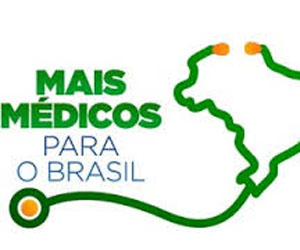
Cuban family doctor Teresa Rosales has been working in Brejo da Madre de Deus (Swamp of the Mother of God) in impoverished, drought-stricken Pernambuco state in Brazil since September 2013. Patients, she reports, are grateful. They are “on their knees on the floor thanking God. They give kisses.
“What we Cuban doctors see primarily is humanity,” says compatriot Angela Zunila; “I want to help the Brazilian people improve their heath.” Now working in Canarana in Bahia, she and her physician husband served as doctors previously in South Africa and Venezuela. Their 3-year-old son remains in Cuba under his grandmother’s care.
Rosales, Zunila, and 400 other Cuban doctors arrived in Brazil in September 2013 under a bi-national agreement mediated by the Pan-American Health Organization. Some 5000 were on hand at the end of November and 2000 more arrived in mid January 2014.
They are part of Brazilian President Dilma Rousseff’s “More Doctors” program joined too by several hundred physicians from Uruguay, Argentina, Spain, and Portugal and 1096 from Brazil itself. According to Health Minister Fernando Menezes, they are serving in “areas with a low index of human development, most of whose people live in extreme poverty.” Eventually 15,000 doctors will be caring for 100 million Brazilians living in 4070 municipalities in 26 states. Opinion surveys estimate that from 74 to 85 percent of Brazilians are enthusiastic about the program.
Rousseff introduced “More Doctors” in July 2013 following nationwide protests over health care and public transportation deficiencies. Brazil’s Constitution guarantees health care for all, yet Brazil has only 1.8 doctors per 1000 persons. The U.S. rate is 2.4/1000, Argentina’s is 3.2/1000, Spain’s rate is 4.0/1000, and Cuba claims 6.7 physicians for 1000 people. Brazilian healthcare is marred by disparities in health services between rich and poor, between cities and the countryside. Almost half of Brazilians lack ready access to primary care.
Cuba was ready to respond to the Brazilian request. Medical schools there regularly graduate 10 percent more physicians than are needed at home. Beginning with Algeria in 1963, Cuba has sent no less than 134,849 doctors to 107 countries. Presently 40,000 Cuban health care providers are serving in 58 countries.
Cubans cite purposes of human solidarity, humanitarianism, and “South-South” cooperation.” Now new demands emerge related to Cuba’s efforts to steer its economy toward sustainability. Cuba is counting on resource-rich countries like Venezuela, Qatar, South Africa, and Brazil to pay for health care collaboration. The aim is partial self-sufficiency for health care at home and international medical missions.
Brazilian funds transferred to Cuba cover the $4200 monthly payment due on behalf of Cuban doctors slated to work in Brazil for three years. Doctors similarly involved from other countries receive the same pay. Cuba’s new sustainability ethos dictates that the government retains two thirds of that amount. Originally, Cuban doctors in Brazil were receiving room and board, plus $1000 per month, divided between $400 available at once and $600 deposited into an account in Cuba. While doctors are abroad, their families are receiving payments equivalent to their former salaries in Cuba. But these arrangements changed.
Brazilian doctors’ organizations claimed that Cuban doctors represented “slave labor” and were poorly trained. That Brazilian medical students educated in Cuba scored higher on qualifying exams helped dispel the latter notion. And as of February, 2014, the amount Cuban doctors received increased to $1245 per month, with $1000 of that delivered to them in Brazil. Relatively high living expenses in Brazil and the early departure of a few Cuban doctors may have prompted the pay hike.
In fact, Brazil’s use of Cuban doctors re-opened wounds left over from the U.S. Cuban Medical Professional Parole program (CMPP). The U.S. State Department and the Department of Homeland Security had jointly launched the program in 2006, assigning administrative tasks to the Cuban American National Foundation, a well-known sponsor of anti-Cuban terror attacks. The goal was to induce Cuban health workers on international missions to defect and, further, to score propaganda points and “undermine Cuban medical diplomacy.” Provisions of the 1965 Cuban Adjustment Act enabled defectors to gain permanent U.S. residence and expect citizenship.
During the first eight months of the “More Doctors” program,” at least 25 Cuban doctors dropped out. Most returned to Cuba, but at least two migrated to the United States under CPPP auspices. Cuban journalist José Manzaneda highlights the irony of worldwide media silence on the program itself and unrestrained news coverage of Cuban doctor Ramona Matos Rodríguez, who ended up in Miami by way of the U.S. embassy in Brasilia.
President Rousseff’s affection for the Cuban doctors is no secret. Offering Facebook commentary on an article in the Porto Alegre newspaper Zero Hora, she observed that, “They are few but are profoundly changing in Brazil the way professionals act in the area of health care and doctor-patient relations. … They are here to change the profile of preventative medicine in Brazil. They dress simply, keep their house clean, and carry their own snacks for lunch. They are systematic, dedicated to the treatment of patients, and furthermore are partygoers, like Brazilians. They are breaking the barrier of prejudices and the corporation-derived style of Brazilian professionals.”












Comments